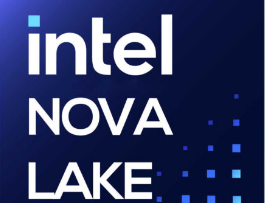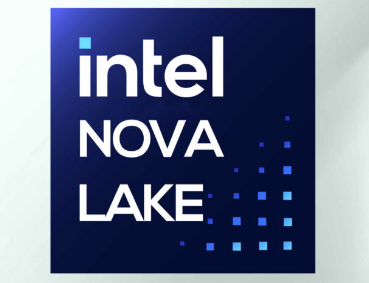As the competition for desktop CPU dominance heats up, Intel is gearing up to make a significant leap with Nova Lake — its next-generation processor architecture poised to reshape the landscape of high-performance gaming and productivity. Expected to debut in late 2026, Nova Lake represents Intel’s bold response to AMD’s 3D V-Cache leadership and Apple’s efficiency-driven silicon.
Whether you’re a gamer, content creator, or power user, here’s everything you need to know about Intel Nova Lake — and why it could be well worth the wait.

Intel Nova Lake
Nova Lake is Intel’s highly anticipated next-generation CPU architecture, expected to debut as part of the Core Ultra 400 series, following the Panther Lake and Arrow Lake lineups. Engineered from the ground up, Nova Lake is set to deliver significant improvements in performance, power efficiency, AI processing, and gaming responsiveness, making it a potential game-changer for enthusiasts and professionals alike.
Unlike previous incremental upgrades, Intel Nova Lake is poised to deliver a true generational breakthrough — emphasizing raw computing power, ultra-low latency, and next-level performance. Designed to meet the intense demands of modern AAA games, competitive esports, and high-end creative workloads, Nova Lake aims to set a new standard for what next-gen CPUs can achieve.
Key Features of Intel Nova Lake (Expected)
🧠 Massive Core Counts
- Up to 52 total cores:
- 16 Performance Cores (P-cores)
- 32 Efficiency Cores (E-cores)
- 4 Low-Power E-cores (LP-E)
- Designed to handle simultaneous gaming + streaming, complex 3D rendering, and AI tasks with ease.
🔥 Huge Cache for Gaming
- Rumored 144MB big Last-Level Cache (bLLC) — tailored for gaming workloads, where large caches can minimize latency and maximize frame rates.
- It could challenge AMD’s 3D V-Cache, currently dominating high-end gaming benchmarks.
💡 Intel 18A Process Node
- Built on Intel’s 18A (1.8nm-class) node — expected to bring superior performance-per-watt and thermal efficiency.
🎮 Integrated GPU and AI
- Enhanced Xe GPU for integrated gaming without discrete cards.
- Advanced AI NPU (Neural Processing Unit) support for real-time upscaling, in-game enhancements, and creator tools like generative background editing or AI noise reduction.
🔄 DDR5 and PCIe 6.0 Support
- Full support for DDR5-8000 RAM and likely PCIe 6.0, offering unmatched bandwidth for next-gen GPUs and SSDs.
Nova Lake Desktop vs Mobile
Intel is expected to debut Nova Lake on desktop (Nova Lake-S) first in late 2026, followed by mobile variants like Nova Lake-AX in 2027.
While the desktop series targets enthusiasts and PC builders, the mobile line may power high-performance laptops and gaming notebooks — offering integrated solutions that rival AMD’s Strix Halo APU line.
Can Nova Lake Beat AMD?
Intel’s goal with Nova Lake is clear: reclaim the gaming crown from AMD. With AMD’s Ryzen 7000X3D series and upcoming Zen 5/Zen 6 architectures setting a high bar in gaming thanks to 3D V-Cache, Intel is planning a counterattack with:
- Larger and faster caches
- Higher core/thread counts
- Improved memory support
- Better energy efficiency
- Focused gaming and AI performance improvements
If these leaks and early reports hold true, Nova Lake could finally push Intel ahead in frame rates, 1% lows, and system responsiveness, especially in CPU-bound games.
Should You Wait for Nova Lake?
If you’re planning a long-term high-end gaming rig or want to build a future-proof system, it might be worth waiting for Nova Lake — especially if you’re already running a capable machine today. However, if you need an upgrade now, current-gen chips like the Intel Core Ultra 200 (Arrow Lake) or AMD Ryzen 7000X3D are still excellent.
Final Thoughts
Nova Lake is shaping up to be one of Intel’s most ambitious and game-changing CPU launches in years. With a huge cache, high core counts, cutting-edge process technology, and AI integrations, it could offer exactly what modern gamers and creators need: raw power, fast response times, and smart computing.








